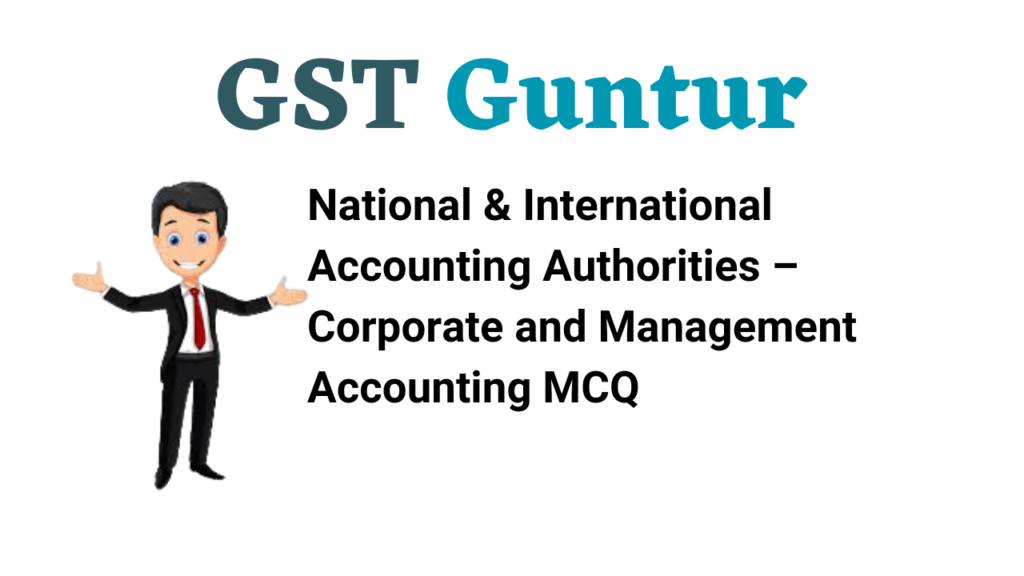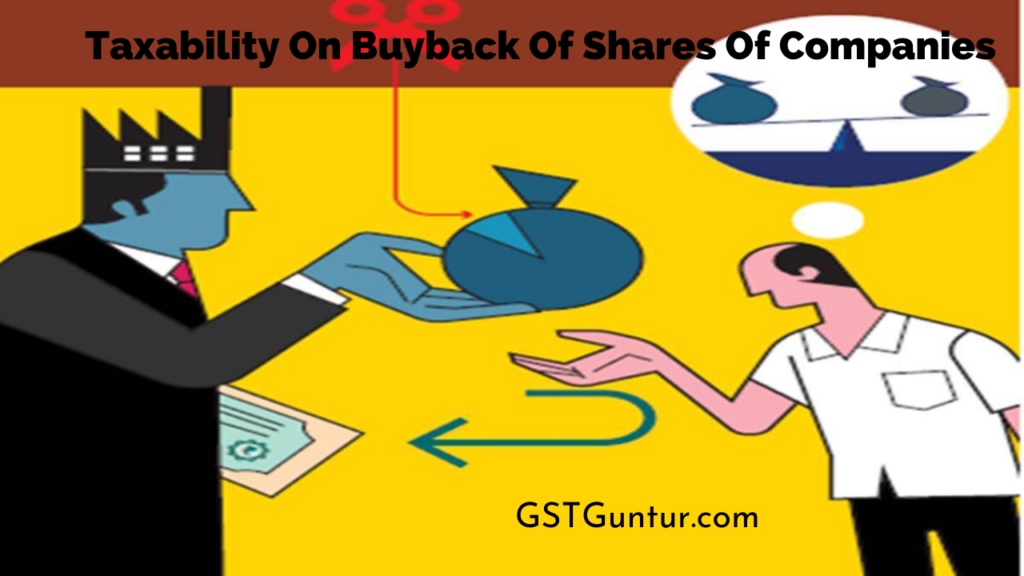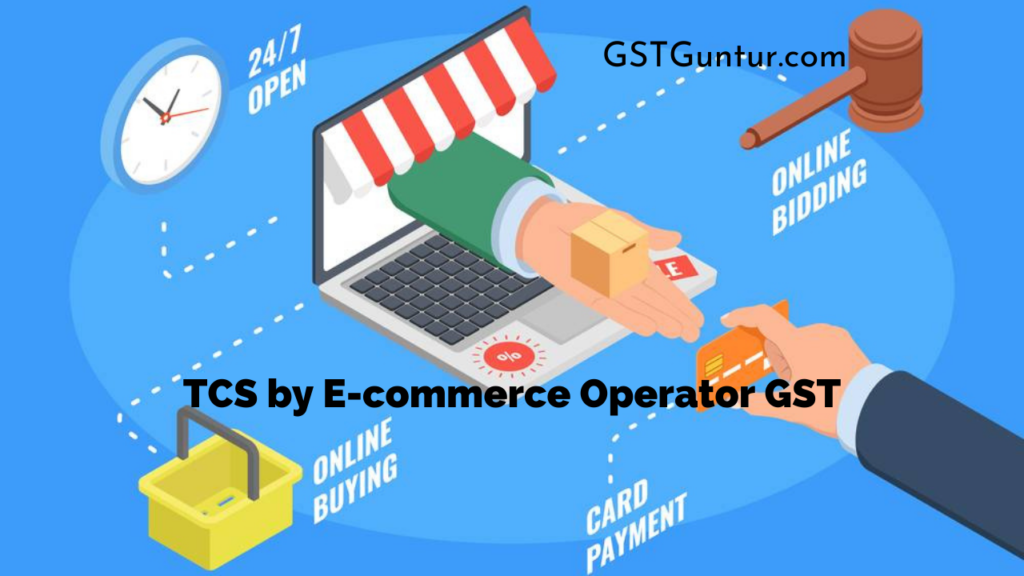Analytical Procedures – CA Inter Auditing Notes is designed strictly as per the latest syllabus and exam pattern.
Analytical Procedures – CA Inter Auditing Notes
Question 1.
Routine checks cannot be depended upon to disclose all the mistakes or manipulation that may exist in accounts, certain other procedures also have to be applied like trend and ratio analysis. Analyse and Explain stating clearly the meaning of analytical procedures. [RTP-Nov. 19]
Answer:
Analytical Procedures:
- Routine checks cannot be depended upon to disclose all the mistakes or manipulation that may exist in accounts, due to which, certain other procedures also have to be applied like trend and ratio analysis in addition to reasonable tests. These collectively are known as overall tests.
- With the passage of time, analytical procedures have acquired lot of significance as substantive audit procedure.
- SA-520 on Analytical Procedures discusses the application of analytical procedures during an audit.
Meaning of Analytical Procedures:
SA 520 “Analytical Procedures” deals with the auditor’s use of analytical procedures as substantive procedures.
Meaning of Analytical Procedures:
Analytical Procedures means evaluations of financial information through analysis of relationships among both financial and non-financial data.
It also encompasses such investigation as is necessary of identified fluctuations or relationships that are inconsistent with other relevant information or that differ from expected values by a significant amount.
Nature of Analytical Procedures:
(a) AP include the consideration of comparisons of the entity’s financial information with
- Comparable information for prior periods.
- Anticipated results of the entity, such as, budgets or forecasts, or expectations of the auditor (for example, estimation of depreciation).
- Similar industry information (for example, comparison of entity’s ratio of sales to accounts receivable with industry averages or with other entities of comparable size in the same industry).
(b) AP also include consideration of relationships, among:
- elements of financial information, such as gross margin percentages.
- financial information and relevant non-financial information, such as payroll costs to number of employees.
Benefits of Analytical Procedures:
The analytical procedures may be used for following purposes:
- To assist the auditor in planning the nature, timing and extent of audit procedures.
- As a substantive procedure when their use can be more effective or efficient than tests of details in reducing detection risk for specific F.S. assertions; and
- As an overall review of the F.S. in the final review, stage of the audit.
Question 2.
Define Analytical Procedures.
Or
Explain what do you mean by Analytical procedures. How such procedures are helpful in auditing?
Answer:
Analytical Procedures:
SA 520 “Analytical Procedures” deals with the auditor’s use of analytical procedures as substantive procedures.
Meaning of Analytical Procedures:
Analytical Procedures means evaluations of financial information through analysis of relationships among both financial and non-financial data.
It also encompasses such investigation as is necessary of identified fluctuations or relationships that are inconsistent with other relevant information or that differ from expected values by a significant amount.
Nature of Analytical Procedures:
(a) AP include the consideration of comparisons of the entity’s financial information with
- Comparable information for prior periods.
- Anticipated results of the entity, such as, budgets or forecasts, or expectations of the auditor (for example, estimation of depreciation).
- Similar industry information (for example, comparison of entity’s ratio of sales to accounts receivable with industry averages or with other entities of comparable size in the same industry).
(b) AP also include consideration of relationships, among:
- elements of financial information, such as gross margin percentages.
- financial information and relevant non-financial information, such as payroll costs to number of employees.
Benefits of Analytical Procedures:
The analytical procedures may be used for following purposes:
1. To assist the auditor in planning the nature, timing and extent of audit procedures.
2. As a substantive procedure when their use can be more effective or efficient than tests of details in reducing detection risk for specific F.S. assertions; and
3. As an overall review of the F.S. in the final review, stage of the audit.

Question 3.
Analytical procedures use comparisons and relationships to assess whether account balances or other data appear reasonable. Explain stating the purpose of analytical procedures. [RTP-May 18]
Answer:
SA 520 “Analytical Procedures” deals with the auditor’s use of analytical procedures as substantive procedures.
Meaning of Analytical Procedures:
Analytical Procedures means evaluations of financial information through analysis of relationships among both financial and non-financial data.
It also encompasses such investigation as is necessary of identified fluctuations or relationships that are inconsistent with other relevant information or that differ from expected values by a significant amount.
Nature of Analytical Procedures:
(a) AP include the consideration of comparisons of the entity’s financial information with
- Comparable information for prior periods.
- Anticipated results of the entity, such as, budgets or forecasts, or expectations of the auditor (for example, estimation of depreciation).
- Similar industry information (for example, comparison of entity’s ratio of sales to accounts receivable with industry averages or with other entities of comparable size in the same industry).
(b) AP also include consideration of relationships, among:
- elements of financial information, such as gross margin percentages.
- financial information and relevant non-financial information, such as payroll costs to number of employees.
Benefits of Analytical Procedures:
The analytical procedures may be used for following purposes:
- 1. To assist the auditor in planning the nature, timing and extent of audit procedures.
- 2. As a substantive procedure when their use can be more effective or efficient than tests of details in reducing detection risk for specific F.S. assertions; and
- 3. As an overall review of the F.S. in the final review, stage of the audit.
Question 4.
Give examples of Analytical Procedures having consideration of comparisons of the entity’s financial information. [RTP-Nov, 19]
Answer:
Analytical Procedures:
SA 520 “Analytical Procedures” deals with the auditor’s use of analytical procedures as substantive procedures.
Meaning of Analytical Procedures:
Analytical Procedures means evaluations of financial information through analysis of relationships among both financial and non-financial data.
It also encompasses such investigation as is necessary of identified fluctuations or relationships that are inconsistent with other relevant information or that differ from expected values by a significant amount.
Nature of Analytical Procedures:
(a) AP include the consideration of comparisons of the entity’s financial information with
- Comparable information for prior periods.
- Anticipated results of the entity, such as, budgets or forecasts, or expectations of the auditor (for example, estimation of depreciation).
- Similar industry information (for example, comparison of entity’s ratio of sales to accounts receivable with industry averages or with other entities of comparable size in the same industry).
(b) AP also include consideration of relationships, among:
- elements of financial information, such as gross margin percentages.
- financial information and relevant non-financial information, such as payroll costs to number of employees.
Benefits of Analytical Procedures:
The analytical procedures may be used for following purposes:
- To assist the auditor in planning the nature, timing and extent of audit procedures.
- As a substantive procedure when their use can be more effective or efficient than tests of details in reducing detection risk for specific F.S. assertions; and
- As an overall review of the F.S. in the final review, stage of the audit.
Question 5.
In the planning stage, analytical procedures assist the auditor in understanding the client’s business and in identifying areas of potential risk. Explain. [RTP-Nov. 20]
Answer:
Use of Analytical Procedures in Planning Stage:
- In the planning stage, analytical procedures assist the auditor in understanding the client’s business and in identifying areas of potential risk by indicating aspects of and developments in the entity’s business of which he was previously unaware.
- This information will assist the auditor in determining the nature, timing and extent of his other audit procedures.
Analytical procedures in planning the audit use both financial data and non-financial information, such as number of employees, square feet of selling space, volume of goods produced and similar information.
Question 6.
Use of substantive Analytical Procedures requires consideration of many factors. Explain those factors.
Or
With respect to SA 520 “Analytical procedures”. Explain the following factors to be considered by the auditor for substantive audit procedures.
(i) Account type
(ii) Predictability
(iii) Nature of Assertion. [Nov. 20 (3 Marks)]
Answer:
Factors to be considered while using substantive analytical procedures:
Use of substantive Analytical Procedures requires consideration of following factors:
1. Availability of Data: The availability of reliable and relevant data will facilitate effective procedures.
2. Disaggregation: The degree of disaggregation in available data can directly affect the degree of its usefulness in detecting misstatements.
3. Account Type: Substantive analytical procedures are more useful for certain types of accounts than for others. Income statement accounts tend to be more predictable because they reflect accumulated transactions over a period, whereas balance sheet accounts represent the net effect of transactions at a point in time or are subject to greater management judgment.
4. Source: Some classes of transactions tend to be more predictable because they consist of numerous, similar transactions. Whereas the transactions recorded by non-routine and estimation are often subject to management judgment and therefore more difficult to predict.
5. Predictability: SAPs are more appropriate when an account balance or relationships between items of data are predictable. A predictable relationship is one that may reasonably be expected to exist and continue over time.
6. Nature of Assertion: SAP may be more effective in providing evidence for some assertions (e.g., completeness or valuation) than for others (e.g., rights and obligations).

Question 7.
Substantive analytical procedures are generally more applicable to large volumes of transactions that tend to be predictable over time. Explain. [RTP-Nov. 18, MTP-April 19]
Answer:
Predictability of Substantive Analytical Procedure:
1. SA 5 2 0 “Analytical Procedures” deals with the auditor’s use of analytical procedures as substantive procedures. As per SA 520, substantive analytical procedures are generally more applicable to large volumes of transactions that tend to be predictable over time.
2. The application of planned analytical procedures is based on the expectation that relationships among data exist and continue in the absence of known conditions to the contrary. However, the suitability of a particular analytical procedure will depend upon the auditor’s assessment of how effective it will be in detecting a misstatement that, individually or when aggregated with other misstatements, may cause the financial statements to be materially misstated.
3. In some cases, even an unsophisticated predictive model may be effective as an analytical procedure. For example, where an entity has a known number of employees at fixed rates of pay throughout the period, it may be possible for the auditor to use this data to estimate the total payroll costs for the period with a high degree of accuracy, thereby providing audit evidence for a significant item in the financial statements and reducing the need to perform tests of details on the payroll.
4. The use of widely recognised trade ratios (such as profit margins for different types of retail entities) can often be used effectively in substantive analytical procedures to provide evidence to support the reasonableness of recorded amounts.
Question 8.
What are the factors that determine the extent of reliance that the auditor places on results of analytical procedures? Explain with reference to SA-520 on “Analytical procedures”.
or
What are the considerations to be kept in mind while performing analytical procedures on data prepared by the client?
Or
The reliability of data is influenced by its source and nature and is dependent on the circumstances under which it is obtained. Accordingly, what are the relevant criteria which determine whether the data is reliable for the purposes of designing substantive analytical procedures?
Or
CA A, auditor of ABC Ltd. wants to design substantive analytical procedure and for that he wants to check whether the data is reliable or not. Mention the relevant points which he has to consider whether data is reliable for purpose of designing the substantive analytical procedures. [Nov. 19 (3 Marks)]
Answer:
Factors determining extent of reliance on analytical procedures (SA-520):
The application of analytical procedures is based on the expectation that relationships among data exist and continue in the absence of known conditions to the contrary. The presence of these relationships provides audit evidence as to the completeness, accuracy and validity of the data produced by the accounting system.
Factors affecting the Reliability of Data on which analytical procedures are to be performed:
As per SA 520 “Analytical Procedures” facts that may affect the reliability of data are:
1. Source of the information available. For example, information may be more reliable when it is obtained from independent sources outside the entity;
2. Comparability of the information available. For example, broad industry data may need to be supplemented to be comparable to that of an entity that produces and sells specialised products;
3. Nature and relevance of the information available. For example, whether budgets have been established as results to be expected rather than as goals to be achieved; and
4. Controls over the preparation of the information that are designed to ensure its completeness, accuracy and validity. For example, controls over the preparation, review and maintenance of budgets.
Question 9.
Explain the techniques available while applying SAP. [RTP-May 19]
Or
Ratio analysis is useful for analysing asset and liability accounts as well as revenue and expense accounts. An individual balance sheet account is difficult to predict on its own, but its relationship to another account is often more predictable (e.g., the trade receivables balance related to sales).
Explain stating the techniques available as substantive analytical procedures. [RTP-May 18, MTP-Oct. 19]
Or
Discuss the techniques available as substantive analytical procedures. [May 18 (5 Marks)]
Or
The design of a substantive analytical procedure is limited only by the availability of reliable data and the experience and creativity of the audit team. Explain clearly stating the techniques available as substantive analytical procedures. [MTP-Aug. 18]
Answer:
Techniques available while applying SAP:
(a) Trend analysis: Trend analysis is most commonly used technique which involves comparison of current data with the prior period balance or with a trend in two or more prior period balances.
(b) Ratio analysis: Ratio analysis involves analysing revenue and capital items forming part of balance sheet and profit and loss account. Ratios can also be compared over a period of time or to the ratios of other entities within the industry.
(c) Reasonableness tests: Unlike trend analysis, this analytical procedure does not rely on events of prior periods, but upon non-financial data for the audit period under consideration. These tests are generally more applicable to income statement accounts and certain accrual or prepayment accounts.
(d) Structural modelling: A modelling tool constructs a statistical model from financial and/or non-financial data of prior accounting periods to predict current account balances (e.g., linear regression).

Question 10.
Explain the commonly used technique in the comparison of current data with the prior period balance or with a trend in two or more prior period balances. [RTP-May 20]
Answer:
Commonly used technique in the comparison of current data with the prior period balance:
- Trend Analysis is commonly used technique for the comparison of current data with the prior period balance or with a trend in two or more prior period balances.
- With this technique, a person can evaluate whether the current balance of an account moves in line with the trend established with previous balances for that account, or based on an understanding of factors that may cause the account to change.
Question 11.
The decision about which audit procedures to perform, including whether to use substantive analytical procedures, is based on the auditor’s judgment. Explain. [RTP-Nov. 20]
Answer:
Use of Substantive Analytical Procedures:
- The substantive procedures at the assertion level may be tests of details, substantive analytical procedures, or a combination of both.
- The decision about which audit procedures to perform, including whether to use substantive analytical procedures, is based on the auditor’s judgment about the expected effectiveness and efficiency of the available audit procedures to reduce audit risk at the assertion level to an acceptably low level.
- The auditor may inquire of management as to the availability and reliability of information needed to apply substantive analytical procedures, and the results of any such analytical procedures performed by the entity. It may be effective to use analytical data prepared by management, provided the auditor is satisfied that such data is properly prepared.
Question 12.
If analytical procedures performed in accordance with SA 520 identify fluctuations or relationships that are inconsistent with other relevant information or that differ from expected values by a significant amount, explain how would the auditor investigate such differences. [RTP-May 19]
Answer:
Investigation of Identified fluctuations:
If analytical procedures performed in accordance with SA 520 identify fluctuations or relationships that are inconsistent with other relevant information or that differ from expected values by a significant amount, the auditor shall investigate such differences by:
(a) Inquiring of management and obtaining appropriate audit evidence relevant to management’s responses; and
(b) Performing other audit procedures as necessary in the circumstances.
- Audit evidence relevant to management’s responses may be obtained by evaluating those responses taking into account the auditor’s understanding of the entity and its environment, and with other audit evidence obtained during the course of the audit.
- The need to perform other audit procedures may arise when, for example, management is unable to provide an explanation, or the explanation, together with the audit evidence obtained relevant to management’s response, is not considered adequate.
Question 13.
The relationships between individual financial statements items traditionally considered in the audit of business entities may not always be relevant in the audit of governments or other non-business public sector entities. Analyse and Explain. [RTP-Nov. 18]
Answer:
Considerations Specific to Public Sector Entities
- The relationships between individual financial statement items traditionally considered in the audit of business entities may not always be relevant in the audit of governments or other nonbusiness public sector entities; for example, in many public-sector entities there may be little direct relationship between revenue and expenditure.
- In addition, because expenditure on the acquisition of assets may not be capitalised, there may be no relationship between expenditures on, for example, inventories and fixed assets and the amount of those assets reported in the financial statements.
- Also, industry data or statistics for comparative purposes may not be available in the public Analytical Procedures sector. However, other relationships may be relevant, for example, variations in the cost per kilometer of road construction or the number of vehicles acquired compared with vehicles retired.
Objective Type Questions (True/False, Correct/Incorrect)
Question 1.
As per SA 520 the term “analytical procedures” means evaluations of financial information through analysis of plausible relationships among financial data only.
Answer:
Statement is incorrect.
SA 520 “Analytical Procedures” defines the term analytical procedures as evaluations of financial information through analysis of plausible relationships among both financial and non-financial data.
Question 2.
Auditor can depend on routine checks to disclose all the mistakes or manipulation that may exist in accounts.
Answer:
Statement is incorrect.
- Auditor cannot be depended on routine checks to disclose all the mistakes or manipulation that may exist in accounts.
- Certain other procedures like trend and ratio analysis also have to be applied in addition to routine checks.
Question 3.
Only purpose of analytical procedures is to obtain relevant and reliable audit evidence when using substantive analytical procedures.
Answer:
Statement is incorrect.
Analytical procedures are being applied:
(a) To obtain relevant & reliable audit evidence when using substantive analytical procedures; &
(b) To design and perform analytical procedures near the end of the audit that assist the auditor when forming an overall conclusion as to whether the F.S. are consistent with auditor’s understanding of the entity.

Question 4.
Analytical Procedures are required in the planning phase only.
Answer:
Statement is incorrect.
Analytical Procedures are applied not only during planning phase but also applied
- during the audit and
- near the completion of audit.
Question 5.
Substantive analytical procedures are generally less applicable to large volumes of transactions that tend to be predictable over time.
Answer:
Statement is incorrect.
Substantive analytical procedures are more appropriate when an account balance or relationships between items of data are predictable. A predictable relationship is one that may reasonably be expected to exist and continue over time.
Question 6.
Analytical procedures are unable to help the auditor in determining nature, timing and extent of other audit procedures at the planning stage. [Nov. 09 (2 Marks)]
Answer:
Statement is incorrect.
Analytical procedure are applied during planning stage and hence helps the auditor in determining nature, timing and extent of other audit procedures. Application of Analytical procedures during planning is governed by SA 315.
SA 520 “Analytical Procedures” deals with the auditor’s use of analytical procedures as substantive procedures (“substantive analytical procedures”), and as procedures near the end of the audit that assist the auditor when forming an overall conclusion on the financial statements.
Question 7.
Analytical procedure is a part of routine audit checking. [May 17 (2 Marks)]
Answer:
Statement is incorrect.
- SA 5 2 0 “Analytical Procedures” defines the term analytical procedures as evaluations of financial information through analysis of plausible relationships among both financial and non-financial data.
- Auditor cannot be depended on routine checks to disclose all the mistakes or manipulation that may exist in accounts. Certain other procedures like trend and ratio analysis also have to be applied in addition to routine checks.
Question 8.
A modelling tool constructs a statistical model from financial data only of prior accounting periods to predict current account balances. [MTP-March 18, March 19]
Answer:
Statement is incorrect.
- A modelling tool constructs a statistical model from financial and/or non-financial data of prior accounting periods to predict current account balances
Question 9.
While designing audit procedures to address an inherent risk or “what can go wrong”, auditor should consider the nature of the risk of material misstatement in order to determine if a substantive analytical procedure can be used to obtain audit evidence. [MTP-March 18, Oct. 18, March 19]
Answer:
Statement is correct.
- While designing audit procedures to address an inherent risk or “what can go wrong”, auditor should consider the nature of the risk of material misstatement in order to determine if a substantive analytical procedure can be used to obtain audit evidence.
- When inherent risk is higher, auditor need to design tests of details to address the higher inherent risk. In case of higher inhered risk, audit evidence obtained solely from substantive analytical procedures is unlikely to be sufficient.

Question 10.
During the audit process, the auditor can easily identify all mistakes or manipulations that may exist in the accounts through routing checking processes. [May 18 (2 Marks)]
Answer:
Statement is incorrect.
Auditor cannot be depended on routine checks to disclose all the mistakes or manipulation that may exist in accounts. Certain other procedures like trend and ratio analysis also have to be applied in addition to routine checks.








